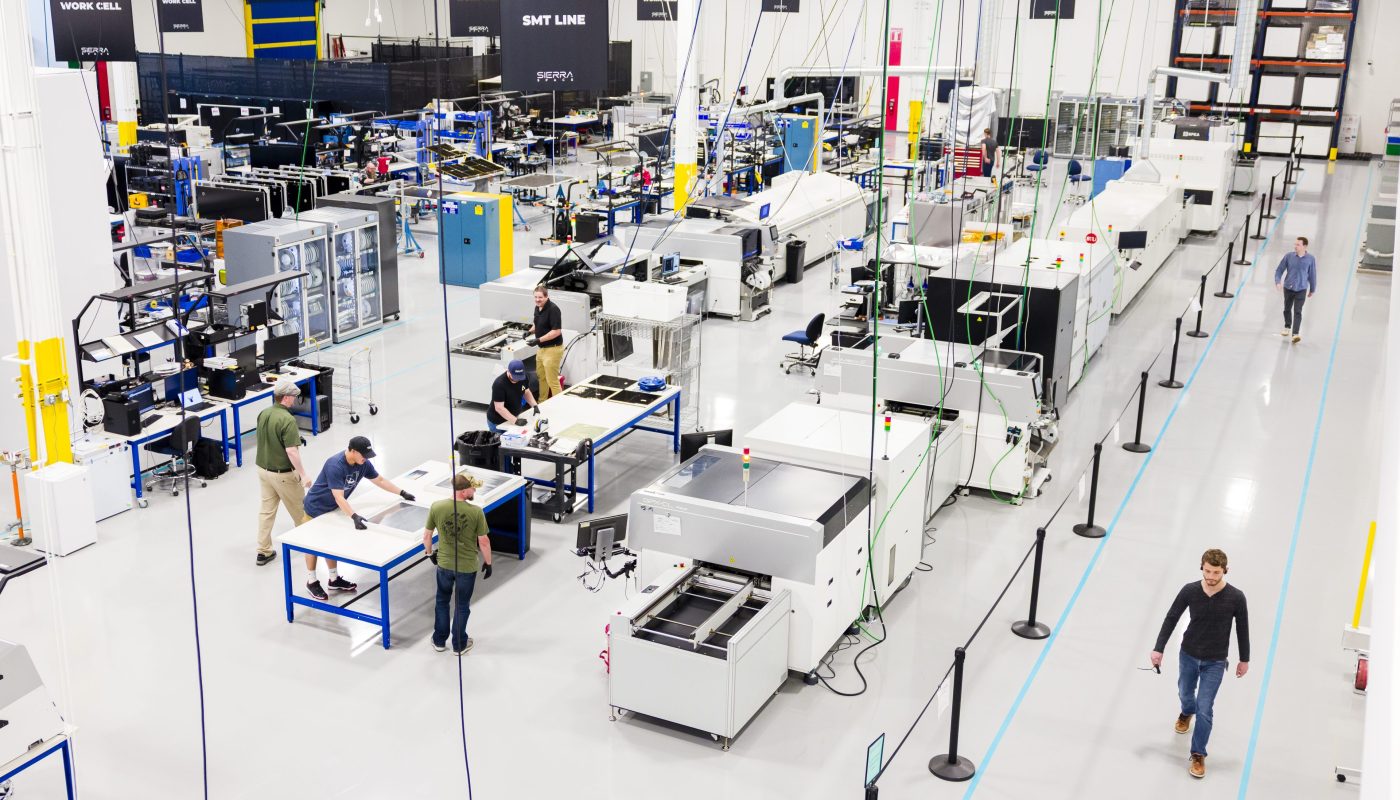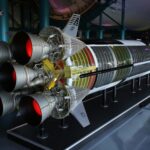Sierra Space has placed its new “Power Station” technology center into full production. The site, located in Broomfield, Colorado, brings automated solar-array manufacturing under one roof. According to industry sources, the company finished factory acceptance tests early yesterday and shifted directly into contract work for defense satellites. The company invested $45 million to fit the 70,000-square-foot building with clean rooms, thermal-vacuum chambers, and vibration rigs.
The center sits only ten miles from the firm’s existing Louisville campus. That proximity links design, qualification, and final assembly teams by a single logistics route. Defense officials confirm that the layout cuts delivery time for flight hardware by several weeks compared with previous multi-state flows.
High-Throughput Solar Array Manufacturing Launches in Sierra Space Broomfield Facility
Inside the building, three Surface Mount Technology (SMT) lines construct solar panels much like high-volume circuit boards. Robots place gallium-arsenide “micro-cells” onto printed circuit backplanes with micron-level accuracy. Our analysis shows that the pick-and-place approach reduces touch labor by roughly 80 percent relative to legacy string-and-tab methods.
Key facility capabilities:
- Class 100,000 clean-room environment across the production floor
- Two thermal-vacuum chambers sized for 4 × 8 ft wing segments
- Six-degree-of-freedom vibration table rated to 12 g rms
- On-site materials lab for solder joint micro-section work
- Secure integration bay for programs with controlled-handling clauses
The first production article rolling out this morning measured 1.2 m × 2.4 m. It cleared baseline electrical tests on the first pass. Engineering staff report open-circuit voltage variation under two percent—well inside contract limits.
Sierra Space adopted SMT after a four-year joint study with the Air Force Research Laboratory. Defense officials confirm that the method now qualifies for flight at power levels up to 10 kW per wing. Each wing folds on a three-hinge boom and locks with a single-action paraffin actuator. The design offers one-motion deployment in less than 15 seconds, useful for rapid-response satellites that launch stowed inside small fairings.
Flight-Qualified Solar Wings Drive Satellite Power Innovations
Advantages cited by program engineers:
- Power density gain of about 10 percent versus conventional panels
- Single-string redundancy baked into every board layer
- Fewer pressure-temperature cycles during build, improving solder life
- Panel-level sensors that report health in real time through CAN bus links
Production tempo will ramp in stages. Management aims for one panel per day by mid-August. “Wing-rate” output—one complete deployable set per week—should follow by December. Contract commitments already stretch into 2027, covering satellites for both classified and civil operators.
Workforce Expansion at Sierra Space Broomfield Boosts Solar Panel Output
More than 100 employees occupy the plant today. Recruiting targets add 60 technicians and 25 engineers before year-end. The Colorado Office of Economic Development granted payroll tax offsets tied to those hires. Regional universities feed the pipeline with electronics assembly certificates and space-power electives.
Supply-chain resilience factored into site selection. Most wafer starting material ships from domestic foundries in Arizona and New York. Printed circuit backplanes come from facilities in the Denver metro area, trimming freight risk. According to purchasing managers, current buffer inventory stands at three months for key items such as silver paste and kapton laminate.
Colorado Space Manufacturing Cluster Strengthens with Sierra Space Investment
More than 500 aerospace firms now operate along the Front Range. State data place annual space-related revenue near $15 billion, up 8 percent year over year. The Power Station adds a new node focused on power subsystems, completing a value chain that already spans payloads, propulsion, and ground control.
Demand drivers center on proliferated satellite constellations for communications, sensing, and navigation, including U.S. defense networks like MILNET. Each spacecraft needs durable, radiation-hard power sources that fit into ever-smaller envelopes. SMT arrays meet those constraints by layering micro-cells in a dense lattice while keeping wiring paths short. Industry analysts note that fewer interconnects translate to lower series resistance and higher end-of-life power.
Micro-Cell SMT Panels Address Power Needs in LEO Constellations
Competitor offerings still rely on manual lay-down of full-size cells. They achieve high efficiency but face schedule risk when order volume spikes. Sierra Space’s automated path scales without adding equal numbers of workers, flattening the cost curve for large buys.
Quality assurance remains central. The Broomfield site runs non-destructive evaluation on every solder joint using X-ray tomography. Panels then enter a 120-hour flight duty cycle that simulates rapid day-night temperature swings. Acceptance hinges on zero cracked vias and stable maximum power point tracking throughout the test.
In-State Qualification Testing Enhances Defense Satellite Turnaround
Defense program managers welcome the in-state testing flow. It reduces transit time between thermal-vacuum and pyroshock stations, raising confidence in pedigree. One official notes that “the satellite bus team can watch array characterization in real time and adjust power-system margins before final integration.”
Beyond solar panels, the factory supports slip-ring drives, hold-down releases, and motor control electronics. That breadth allows turnkey delivery of complete wing assemblies. According to industry sources, two classified programs already placed multi-year orders covering flight sets plus orbital spares.
The tech center also functions as a learning lab for power-bus upgrades tied to emerging electric-propulsion buses. Sierra Space engineers plan to integrate smart PWM converters that regulate solar string output automatically under eclipse transitions. Early breadboards achieved 97 percent conversion efficiency at radiation doses above 45 krad.
Radiation-Hardened Power Modules for Electric Propulsion Buses
National security planners press for hardier power sources able to survive proximity-operations debris fields. The company answers with reinforced cover-glass and edge-tile shields rated for 4 km/s impact velocities. Test footage recorded this month shows a one-gram aluminum sphere shattering on panel glass without breaching the underlying micro-cell matrix.
Reinforced Solar Panel Shields for Debris Survival in Defense-Oriented Missions
Commercial customers building broadband constellations look for shorter lead times to keep deployment waves on track. SMT lines, designed for one-hour changeovers, meet that need. Contracting officers point out that predictable schedules cut launch manifest penalties, a hidden but heavy cost in past programs.
Environmental factors shape plant processes too. Reflow ovens recycle hot exhaust into pre-heat zones, cutting energy draw by 30 percent. Lead-free solder alloys comply with European space standards, easing cross-border licensing.
Colorado regulators approved the project after a nine-month review. Community feedback focused on traffic, water use, and night lighting. Mitigations include staggered shifts, low-flow fixtures, and fully shielded exterior lamps pointed downward. Sierra Space also funds a local STEM internship tying high-school coursework to real factory tasks.
Commercial Satellite Supply Chain and Green Manufacturing at Sierra Space Broomfield
Looking forward, the firm eyes output of 100 wings per year once line balance stabilizes. That volume equals roughly 1.4 MW of on-orbit generating capacity, enough to supply dozens of mid-size buses or several hundred smallsats. If defense demand rises, the site blueprint allows one additional SMT line without structural changes.
Challenges remain. Global gallium supply shows price pressure. The company hedges through multi-year contracts and material substitutes in lower-power panels. Logistics planners track road-weather closures that could slow shipments over the Rockies in winter. Contingency stock and dual-source carriers limit those risks.
Industry reaction trends positive. One satellite integrator executive says the Power Station “moves space-grade solar into the same industrial mindset we see in terrestrial electronics.” Market analysts predict wider adoption of micro-cell SMT across LEO and cislunar platforms within three years.
Defense-Aerospace will monitor production milestones, qualification campaigns, and first-flight dates in the months ahead. For now, the Power Station stands as a fast-moving node in the U.S. space-power chain, balancing cost, volume, and resilience at a moment when orbital assets matter more than ever.
REFERENCE SOURCES
- https://www.sierraspace.com/space-technology/electrical-power-systems/
- https://www.sierraspace.com/press-releases/sierra-space-announces-opening-of-new-power-station-technology-center-in-colorado-as-defense-operations-grow/
- https://www.circuitsassembly.com/ca/current/42336-sierra-space-announces-opening-of-new-power-station-technology-center-in-colorado-as-defense-operations-grow.html
- https://evertiq.com/news/2025-06-26-sierra-space-opens-new-solar-array-facility-in-colorado
- https://www.sierraspace.com/news/



